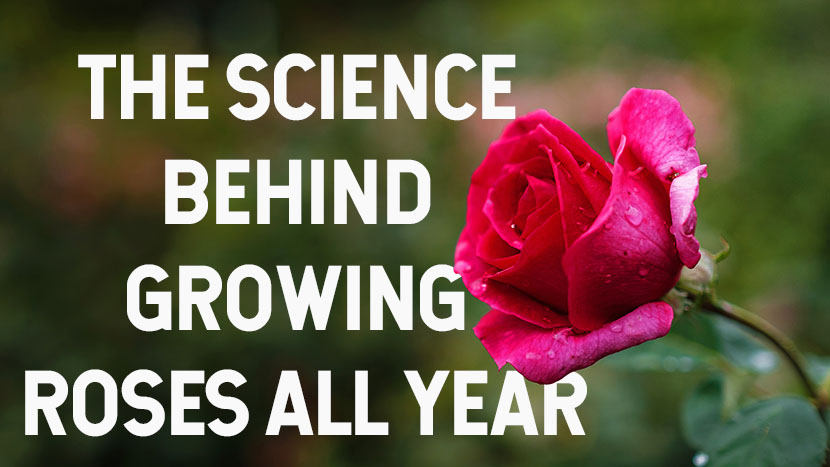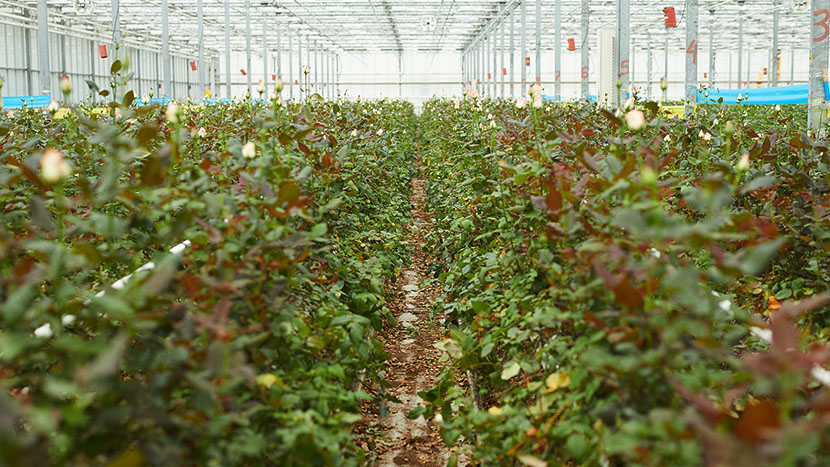The Science Behind the #1 Romance Icon: Rose Breeding Technology
Roses are one of the most popular fresh-cut flowers that are sold around the world. Due to this, they are high in demand, no matter the season. Some countries with more stable climates can produce virtually year round, but many places can not. So how do other countries breed roses year round? With a little science and technology of course!
Breeding Roses in Hothouses
Roses have the same needs as other plants: light, water, and nutrients, but they also require relatively warm climates. The solution to making this work year-round is hothouses. Breeding roses in hothouses has proven to be a profitable business venture, since roses sell all year, it makes sense to invest in a way to grow them all year too! After 25-30 days after seeding, the first buds appear. With adequate care, a rose can produce up to 10 kg of green mass per square meter every year. While the profitability of flower cultivation might approach 300%. That is a lot of roses, and a lot of cash!
The most important thing for producers at this point is to create a sales market or find a flower shop to distribute plants through shops online flower delivery included. For instance, flower delivery Dubai has a huge variety of roses; working as a distributor where you can book a bouquet of flowers according to your taste. There is steady proof that floriculture is among the most profitable agricultural activities. However, when it comes to cultivating roses in a greenhouse, several key concerns must be addressed.
Elements For a Good Greenhouse
The first point is that you’ll need a tall greenhouse. A greenhouse that meets all of the critical requirements for rose development. A favorable greenhouse environment is required for rose cultivation. The following conditions must be met:
- The proper temperature regime
- The proper degree of humidity and drip watering
- High-quality soil fertilizer, with the proper ratios of NPK according to your rose species
- Sufficient area, with comfortable distance between plants so they do not compete with one another
- Good ventilation in the greenhouse
Other Considerations
The second important point to consider if starting to breed roses is the range of options you have available. If you’re just getting started with roses, start with kinds that thrive in hothouse conditions. It is also critical to select the colors of the roses for sale. Orange roses for example are now widely available for purchase.
Proper rose care amid hothouse breeding
Light
Rose cultivation in a greenhouse requires proper rose care. In order to achieve good yields, you should constantly manage the light regime. Roses in the wild would grow on the forest floor below large trees, so, they dislike direct sunshine. To provide more comfortable circumstances for your flowers, apply darkening and partial shading. Roses “burn out” under direct sunshine – meaning they lose their color. It is also useful to deploy curtains from time to time. It is super convenient, and the location of your greenhouse curtains can be changed. But, once again, moderation is the key.
Water and Clipping
Roses require a lot of water. Particularly within the first four weeks following planting. Use drip irrigation systems for irrigation; they are significantly more efficient than rain irrigation and allow more rational water use, which is vital. Furthermore, drip irrigation allows for more precise determination of the required water dose. Modern systems allow you to programme different drip watering settings for different stages of rose growth and blossoming. Simple electronics are used in such systems. When planning for watering don’t forget that it is also required to allow for for condensate drainage.
Roses should be clipped on a regular basis, and more aggressively six weeks before winter. This is critical and relates to their overall health and regeneration. However, you cannot cut too close to the earth.
Fertilizer and Spacing
Fertilizer can be applied using both drip and dosing systems. You should be aware that there is a risk of producing so-called “blind shoots” that do not produce flowers. This is a setback. Roses require a suitable greenhouse environment to thrive. The distance from the upper edge of the greenhouse roof to the buds themselves is also important. It should be at least 2 meters. This will provide your plants with the necessary space and climate.
Temperature and Ventilation
It is obvious that before embarking on this business venture, you should research all available botanical knowledge on cultivating roses. Another critical consideration is that the greenhouse cannot overheat. If this happens, your plants can evaporate, wither, or even die completely.
There are several ways to ventilate modern greenhouses in the warm season. It all depends on the size of your greenhouse and your financial capabilities. In winter and autumn, you will need to shield your greenhouse from the cold outside air. In both cases, the surface ventilation system is the best. They say that this method provides the most optimal air exchange between the air outside and the air inside your greenhouse. Aside from that, many people insulate the greenhouse with various fabrics and insulating materials.
Extra Tips
Some secrets are employed when cultivating greenhouse roses. Some use carbon dioxide, for example, which has a good influence on rose yield and quality. Pipes are placed for this purpose, preferably beneath the seedlings.
Conclusion
Before starting to breed your own roses do plenty of research on the best way to provide care to your roses within your budget. The key elements are the right amounts of light, water, space, fertilizers, heat, and ventilation. With this, you can have an excellent yield and beautiful roses to sell!


































































































